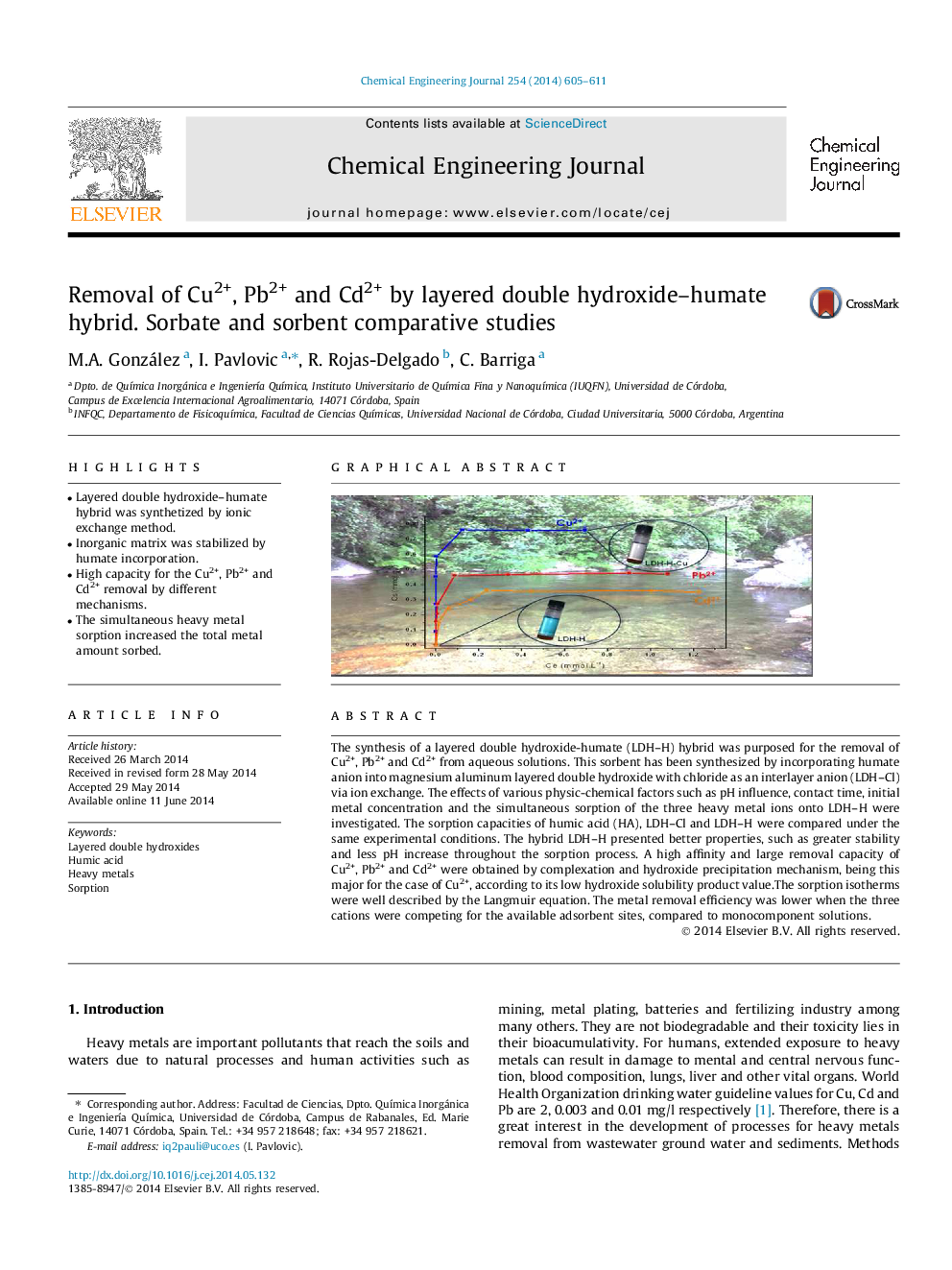| Article ID | Journal | Published Year | Pages | File Type |
|---|---|---|---|---|
| 147286 | Chemical Engineering Journal | 2014 | 7 Pages |
•Layered double hydroxide–humate hybrid was synthetized by ionic exchange method.•Inorganic matrix was stabilized by humate incorporation.•High capacity for the Cu2+, Pb2+ and Cd2+ removal by different mechanisms.•The simultaneous heavy metal sorption increased the total metal amount sorbed.
The synthesis of a layered double hydroxide-humate (LDH–H) hybrid was purposed for the removal of Cu2+, Pb2+ and Cd2+ from aqueous solutions. This sorbent has been synthesized by incorporating humate anion into magnesium aluminum layered double hydroxide with chloride as an interlayer anion (LDH–Cl) via ion exchange. The effects of various physic-chemical factors such as pH influence, contact time, initial metal concentration and the simultaneous sorption of the three heavy metal ions onto LDH–H were investigated. The sorption capacities of humic acid (HA), LDH–Cl and LDH–H were compared under the same experimental conditions. The hybrid LDH–H presented better properties, such as greater stability and less pH increase throughout the sorption process. A high affinity and large removal capacity of Cu2+, Pb2+ and Cd2+ were obtained by complexation and hydroxide precipitation mechanism, being this major for the case of Cu2+, according to its low hydroxide solubility product value.The sorption isotherms were well described by the Langmuir equation. The metal removal efficiency was lower when the three cations were competing for the available adsorbent sites, compared to monocomponent solutions.
Graphical abstractFigure optionsDownload full-size imageDownload as PowerPoint slide
